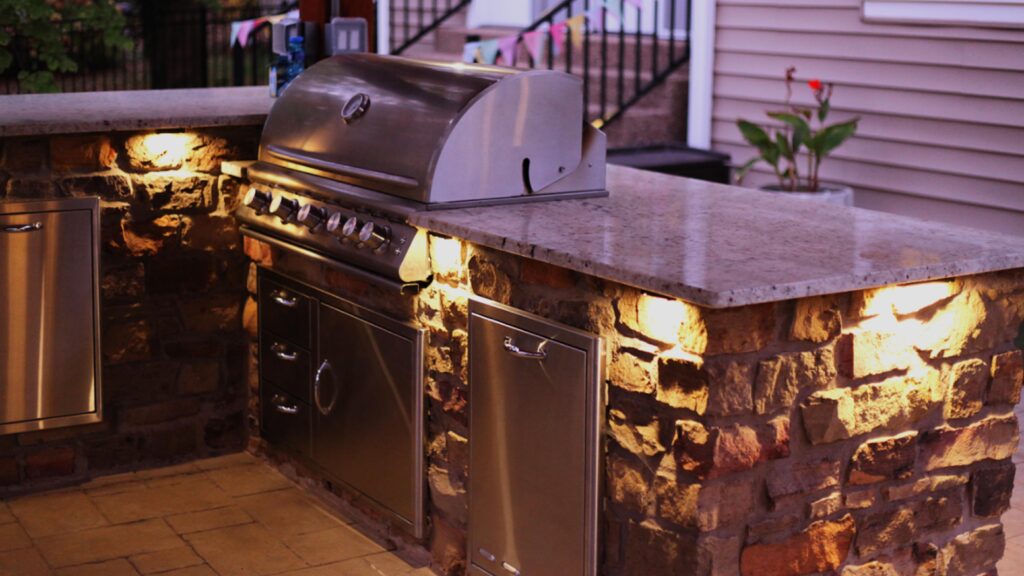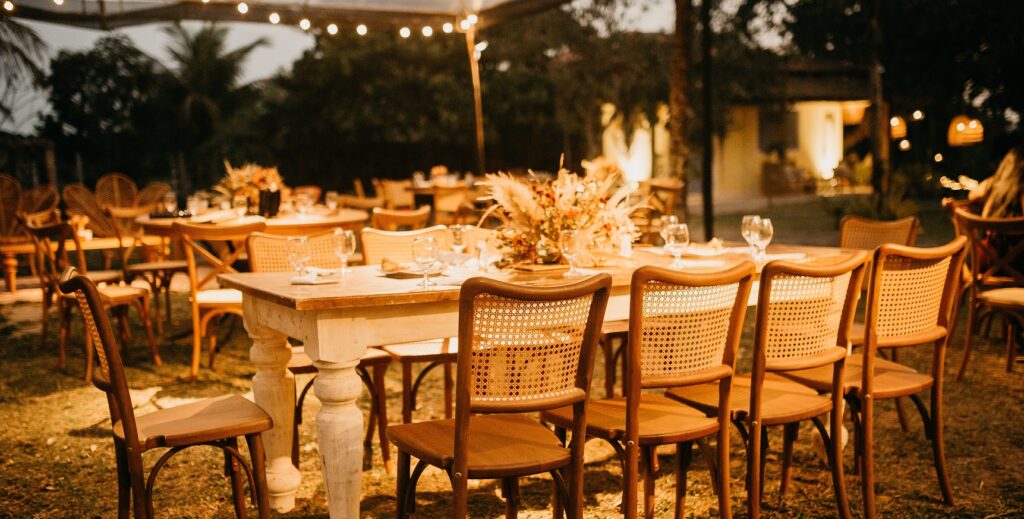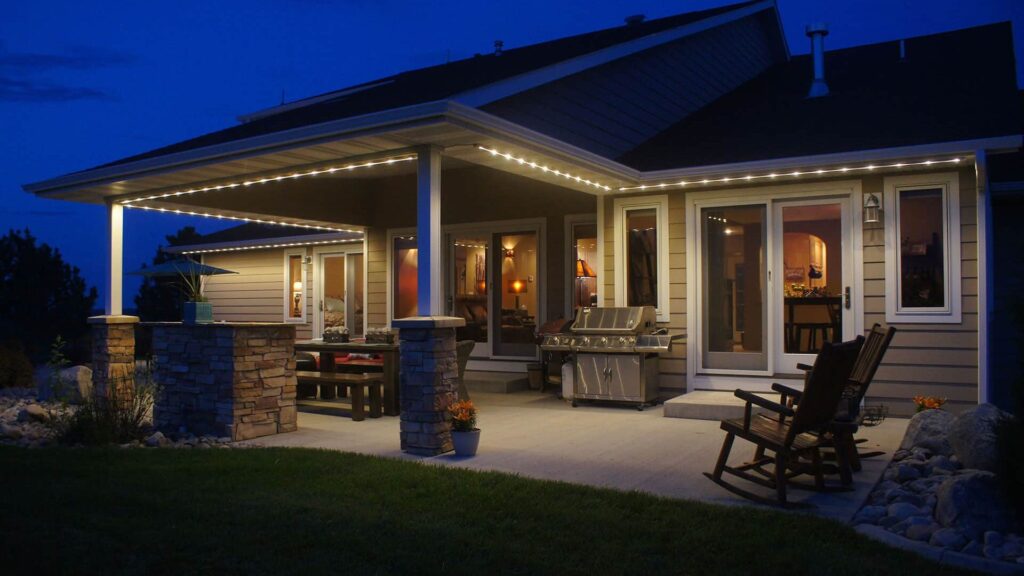After a long and muggy St. Louis summer, the cooler temperatures of fall are welcome and invigorating. Okay, maybe the fall-time allergens like ragweed aren’t so welcome, but we still love everything else autumn brings our way. Simmering soup in a crockpot, mums and hay bales on the porch, pumpkins, and apples, and Halloween parties. Fall is the perfect time to get your garden and yard cleaned up and in shape before the holiday season that’s waiting just around the corner. Use this handy fall clean-up checklist and make quick work of the fall maintenance chores, so you can get back to sipping cider and enjoying the breeze.
1: Do NOT trim hedges, bushes, and shrubs.
The first one is so easy, you’re going to love it: it’s a task you do not need to tackle during the fall. While fall might seem like a good time for pruning back those bushes in front of the house, resist the urge. Why? Because trimming back branches before the truly cold weather has started might actually promote new growth. If that growth doesn’t have enough time to harden before the first frost, the shrub can be damaged. (See here for more details.) So leave this chore off the list!
Generally, it’s advised to prune spring-flowering shrubs during their growing season and fall-flowering shrubs in the winter.
2: Do NOT trim trees in the fall either.
Is this the easiest chore list you’ve ever had, or what? We promise we’ll start giving you actual things to do soon. But for the same reason mentioned above, strike ‘tree trimming’ from your normal fall list. We know that fall weather makes you think of lumberjacks and chainsaws but resist the urge. Trimming trees will stimulate new growth, the growth won’t have time to mature and harden, and those first frosts can cause damage to the trees.
But don’t worry, you can still use your chainsaw in the fall (more on that below).
3: Clean up branches and debris.
What you can do (or corral your kids into doing) is clean up fallen branches, sticks, and debris. This chore alone can make things around your yard look 100% better. Get out on a cool fall morning and drag all the larger yard debris into a pile. Then go through landscaped areas, flower beds, and under trees and do the same thing.
4: Clean up the garden for winter.
It’s time to say goodbye to the garden plants until springtime. Bring in that last harvest, then pull up plants and gather debris from the garden. Separate natural debris, such as leaves, plants, stalks, and weeds from non-biodegradable debris (plastic landscape sheeting, plant markers, wire supports).
5: Weed the flower beds.
Take advantage of the cooler temperatures to get in one last thorough weeding of all the flower beds and landscaped areas. If you’ve encountered some of the nasties like poison ivy or poison oak in your yard or garden before, be on the lookout. Wear a long-sleeved shirt, gloves, and a mask or bandana over your face for more protection.
6: Clean out the gutters.
This is one chore you definitely want to get out of the way before winter sets in, but you do need to time it properly. Gutters tend to get clogged up by all the falling leaves, so if you tackle this chore too early in the fall, you’ll end up doing it again. Nobody wants that! Pay attention to the trees closest to your home, and when they’ve shed most of their leaves, put “gutters” on your weekend to-do list.
7: Aerate the yard.
Aeration is a standby for fall maintenance, with good reason: it helps break up overgrown, tangled mats of roots under the grass and loosens up the soil beneath. Soil that’s too densely packed won’t be able to absorb water or nutrients as well, which means grass won’t thrive like it could. So rent an aerator or call in a yard crew so your yard has its best shot and looks great next spring.
8: Fertilize the yard.
Post-aeration is a great time to fertilize the lawn. The soil will be ready to absorb, and fall is prime time for grass fertilization. The pros advise a timeline of 2-3 weeks before the first frost of the season. Since the usual first frost in St. Louis is around the 3rd or 4th week of October, plan on fertilizing the yard the first week of October.
9: Mow the yard one last time.
You might think you’ll get to put away the lawn mower the same weekend you fertilize the yard, but that may not be true. Grass stops growing (goes dormant) when the soil temperature gets low enough. Since fall temperatures in St. Louis can fluctuate like crazy, you may still have growth happening in late October. Just keep an eye on things, and mow at your regular blade setting for the last cut of the season.
10: Dispose of yard and garden debris.
Most municipalities have certain days for large item pickup and for yard/garden debris. Check with your local city office to find out what the schedule is, then get the appropriate containers — usually the large, heavy-duty paper bags that you’ll see stacked by the curb. Fill these with the garden and yard debris you’ve collected from all that hard work. Be sure to dispose of the non-biodegradable debris in the trash can, not the yard bags.
11: Divide spring-blooming perennials.
Don’t mess with the fall-blooming perennials. Now is their time. Leave them alone so they can do their thing, and you can enjoy it. For the spring-bloomers, though, fall is a great time to divide and spread the wealth. Dig in, separate clumps gently at the roots, and fill in those sparse areas so you’ll have a beautiful show when spring rolls around.
12: Plant fall annuals.
You can fill in those blank spots right now with fall-blooming, or hardy, annuals. Mums are everybody’s favorite, but there are other options. Petunia (technically a semi-hardy annual) will lavish fall-time color. Also worthy of inclusion in your fall flower beds: pansies, alyssum, marigolds, and celosia.
13: Put down a fresh layer of mulch.
Mulch makes everything look neat and fresh, and helps hold in soil nutrients. Once you’ve rearranged the perennials and added those flowering pops of color for falltime, lay down fresh mulch for a final touch.
14: Winterize equipment and clean outdoor tools.
When you’ve finished the last mowing, be sure to winterize the mower and any other yard or garden equipment. Usually, this involves an oil change (for the four-cycle equipment), adding fuel stabilizer, doing a good inspection, cleaning, and covering. See a more thorough guide here.
15: Winterize hoses and spigots.
Nobody wants frozen pipes this winter. Empty out garden hoses — if you can, hang or drape from deck railings or sturdy tree branches for an hour or two to drain thoroughly. Then coil and store hoses in the garage or shed. It’s a smart idea to install outdoor faucet covers over any exposed spigots. If you need to leave one hose out for a few end-of-season needs, disconnect it from the spigot.
16: Prep for nights around the firepit.
Cooler weather doesn’t mean you don’t get to enjoy the outdoors! If you’re raring to use that chainsaw, here’s the chore you’ve been waiting for. Cut firewood into lengths that fit easily into the fire pit (and be sure to follow all safety precautions while doing so). Stack wood up and keep it covered. Collect the sticks and twigs in a barrel to use for kindling, and you’re all set for cozy evenings around the fire.
Want to make fall even more magical? Check out these ideas, then get in touch to find out how we can make it come to life for your home!




